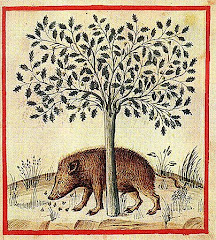
One of the most remarkable things about a festival such as this is the way in which it changes your perspective of a place or culture you thought you knew so well. Wales will be so much richer to me from now on and, wherever I go in that small country, I'll have some idea of the incredible arts, crafts and music hidden around every corner.
Likewise, I have had the opportunity to sample some of the best talents of the local African American communities, several South American musical cultures and also a small number of Welsh Patagonians.
The only misfortune with all this is that we, as participants, have so little time to explore and absorb it all. After a full week on the National Mall, I have yet to cross the main path and see properly what is going on on the other side. It's the same for all of us. Regular mealtimes together give us all the opportunity to meet. Fascinating discussions are had, potential collaborations are explored, but only very rarely do we get to actually see each other in action.
In fact, our primary experiences are limited to the American public who come to visit us at our stands in droves. It's a very interesting cultural experience. Several of us have been surprised at how friendly, curious and forthcoming the locals are. More than once it has been commented that where a British person would stand and watch a demonstration in silence, never daring to ask questions, the Americans take an entirely different approach. Often they are so full of questions that squeezing in the occasional demonstration can be a real trial.

But we managed a few in the end. Gareth and I have been doing daily demonstrations on how to extract aromatic waters from medicinal and culinary plants. It's been a huge success and explaining the set-up to a constantly changing audience can easily keep us occupied for hours. One visitor asked me for written instructions which I promised I would put on the blog. If you're reading this now, rest assured it will go up as soon as I have access to a diagram I did which explains it fully.
Gareth and his leeches have also been very successful. Unusually, there are no livestock at the festival this year and so our 3 buckets of leeches are fulfilling that role admirably. Sometimes I wonder, given the fond way in which visitors and staff talk of the leeches, that they haven't mistaken them for something more like a family of hamsters.
Meanwhile, I have finally begun the occasional dyeing demonstration. It has to be said that the first one was a very disappointing effort. Using Broom (Cytisus scoparius) I should have been able to produce some kind of pleasantly strong greenish yellow colour. Instead I ended up with a clump of wool looking like it had been dragged through a mud puddle. I believe the problem is with the US electricity supply. I simply can't get the water to boil on my little hob and I should be simmering the stuff for over an hour. I've had the same problem with my camera which just didn't charge overnight resulting in a shortage of new photos. I managed to use the problem to my advantage yesterday however. Madder (Rubia tinctorum) typically dyes best at 60 degrees (C) or lower. The result was an absolutely incredible flame red. The best I think I've ever had from it and the photo below certainly doesn't do the colour intensity justice.
As I said before, meeting the visitors is often a great source of interest. I absolutely love these opportunities to share and exchange information. Whilst I've done my best to get people excited about the potential of medicinal plants, I must admit I'm learning an awful lot myself.
One of the most memorable examples comes from someone who said he had been diagnosed with MS several years ago. He said that he had given apitherapy (bee stings) a try and found it very successful. In fact, his last scan showed all or almost all lesions had disappeared. To support the idea that it's the bee stings which made the difference, he described how he had become a beekeeper and had once received 200+ stings when a hive collapsed near him. Although he was lucky to survive, he said that afterwards he had not a single symptom for the next 3 months.
But that's not all he told me. Given that he kept bees, I asked him if he had had trouble with Varroa and various other bee related problems that are so prominent at present. He told me he hadn't had any trouble at all even though others had. His methods with the hives are entirely organic and he said his secret to success was Pennyroyal (Mentha pulegium). He mixes an infusion of this rather potent mint with honey taken from the bees. He then waters it down and gives it back to the bees as drinking water in cans near their hives. By drinking this water the bees are able to ingest some of the mint and also introduce it to the hive itself. He says he does this summer and autumn and so far so good. It's definitely something to pass on to Chris who keeps the bees at the National Botanic Garden of Wales and who has had mixed results experimenting with Citronella and such like.
Another very exciting experience for me came from some of the other participants. I was told that the Welsh food demonstrators had been doing something with the plant Yerba Maté (Ilex paraguariensis) - a South American holly shrub. "Welsh!?" we exclaimed, "that's hardly Welsh!". But of course it is Welsh if you include the small number of Patagonians who are here amongst us. Intrigued I hunted one of them down and she explained that they drink Maté regularly as a sort of social ritual. She invited me to join which I enthusiastically agreed to do next time they were to have some. Later that day she found me and asked me along to where they were sharing their brew. What I found was very exciting indeed.
They drink their Maté in a small terracotta pot. It is packed to the very top with the chopped dried plant which is a grey-green in colour. Hot water is added and an attractive metal straw protrudes from the mix. They had just one small pot to share between the three of us and I gathered that the sharing aspect was important to the whole experience. We then took turns to sip from the cup and I was impressed by the strong fresh and surprisingly bitter flavour. I have seen the Maté plant so many times and heard about it frequently, but this is the first opportunity that I've ever had to taste it. I was instantly sold on the idea and enjoyed the flavour very much which is most closely reminiscent to a top quality fresh green tea I was once given by a group of Chinese botanists.
The chance to share this tea with these Patagonians is one of the most special experiences I've had here so far and I'm hoping I can buy some of the tea from them if they have enough left. I certainly intend to seek them out again so that I can photograph the pot and straw. In the mean time a photo and explanation are available on Wikipedia here.





















